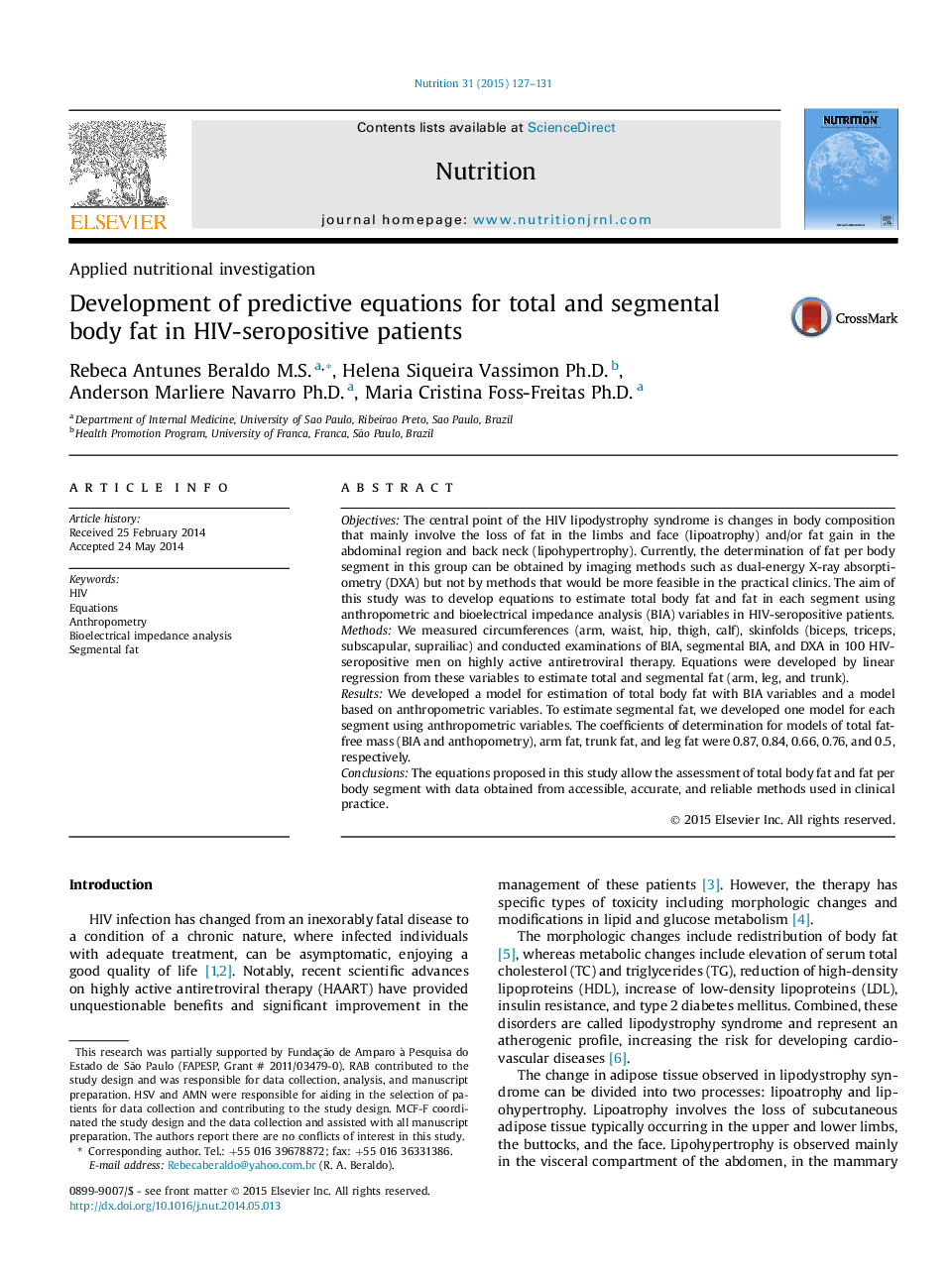| Article ID | Journal | Published Year | Pages | File Type |
|---|---|---|---|---|
| 6089506 | Nutrition | 2015 | 5 Pages |
ObjectivesThe central point of the HIV lipodystrophy syndrome is changes in body composition that mainly involve the loss of fat in the limbs and face (lipoatrophy) and/or fat gain in the abdominal region and back neck (lipohypertrophy). Currently, the determination of fat per body segment in this group can be obtained by imaging methods such as dual-energy X-ray absorptiometry (DXA) but not by methods that would be more feasible in the practical clinics. The aim of this study was to develop equations to estimate total body fat and fat in each segment using anthropometric and bioelectrical impedance analysis (BIA) variables in HIV-seropositive patients.MethodsWe measured circumferences (arm, waist, hip, thigh, calf), skinfolds (biceps, triceps, subscapular, suprailiac) and conducted examinations of BIA, segmental BIA, and DXA in 100 HIV-seropositive men on highly active antiretroviral therapy. Equations were developed by linear regression from these variables to estimate total and segmental fat (arm, leg, and trunk).ResultsWe developed a model for estimation of total body fat with BIA variables and a model based on anthropometric variables. To estimate segmental fat, we developed one model for each segment using anthropometric variables. The coefficients of determination for models of total fat-free mass (BIA and anthopometry), arm fat, trunk fat, and leg fat were 0.87, 0.84, 0.66, 0.76, and 0.5, respectively.ConclusionsThe equations proposed in this study allow the assessment of total body fat and fat per body segment with data obtained from accessible, accurate, and reliable methods used in clinical practice.
